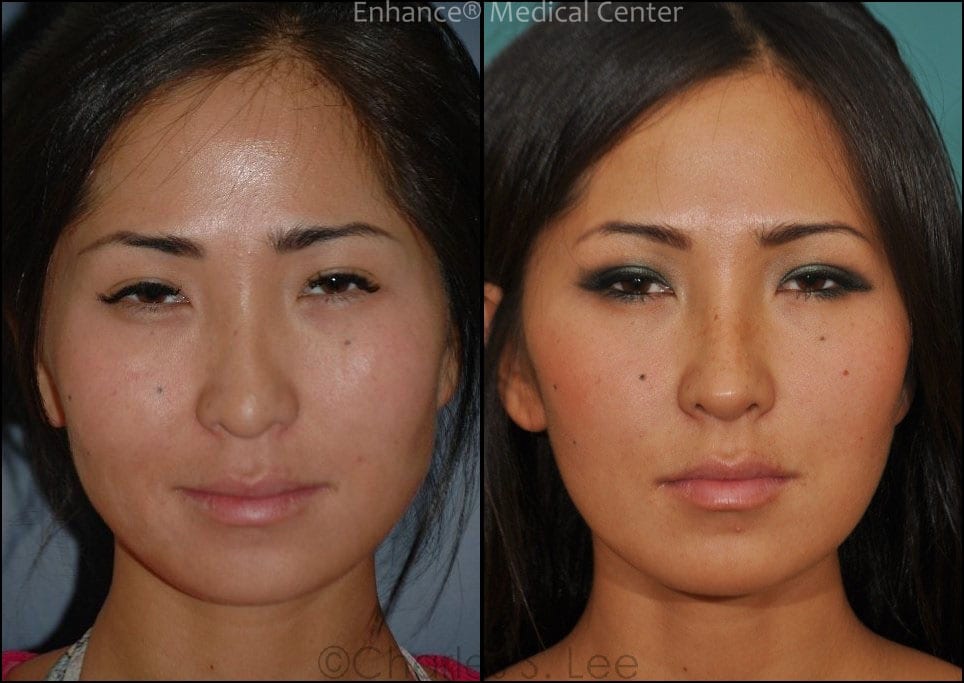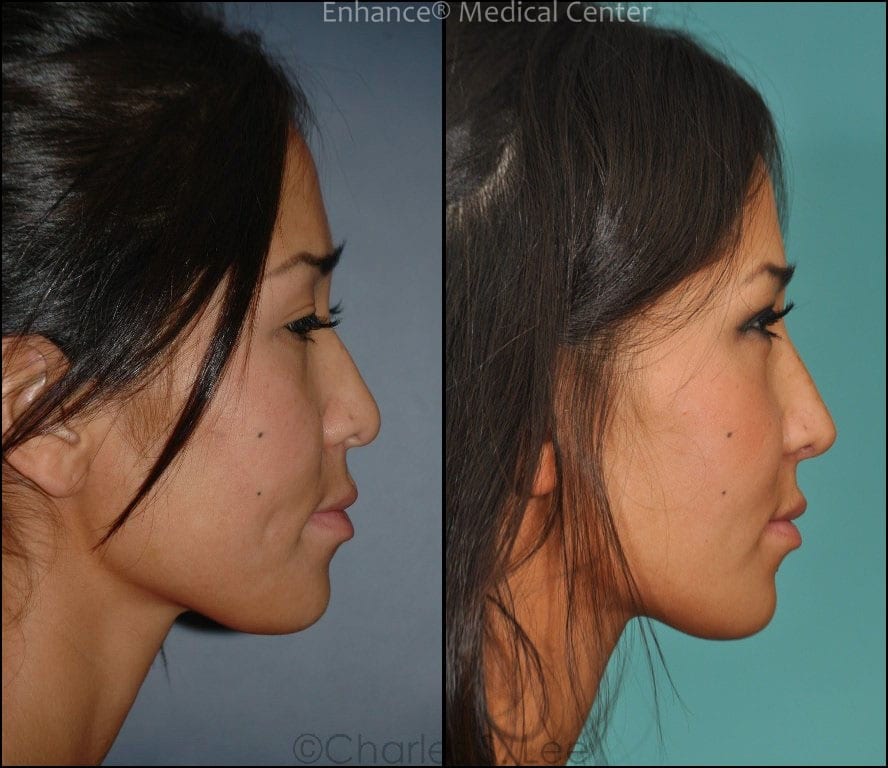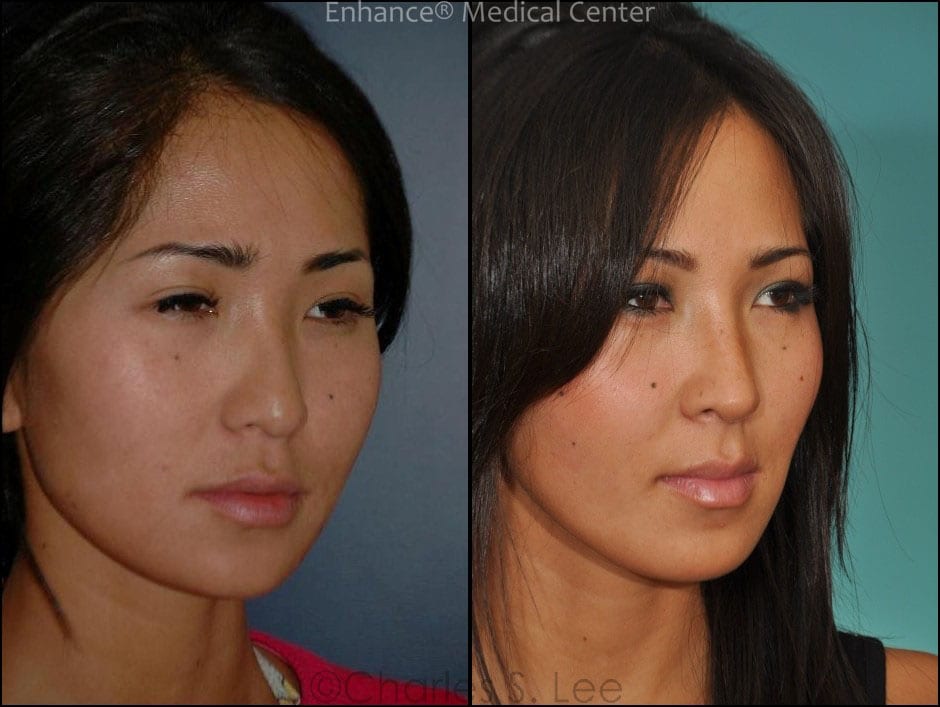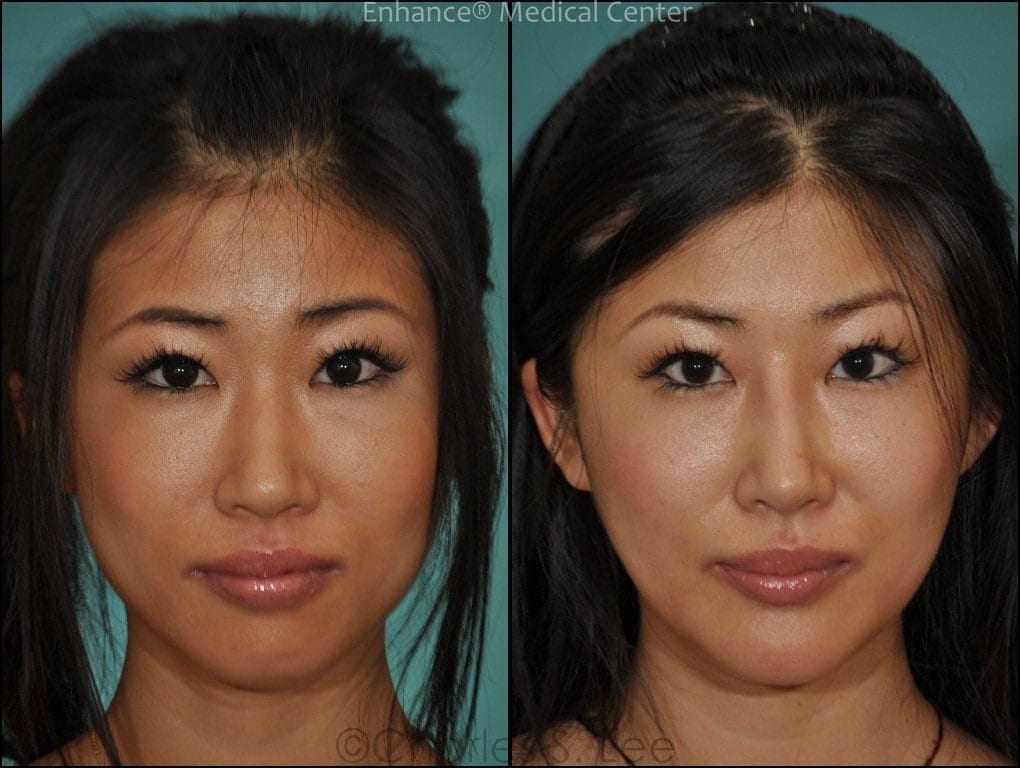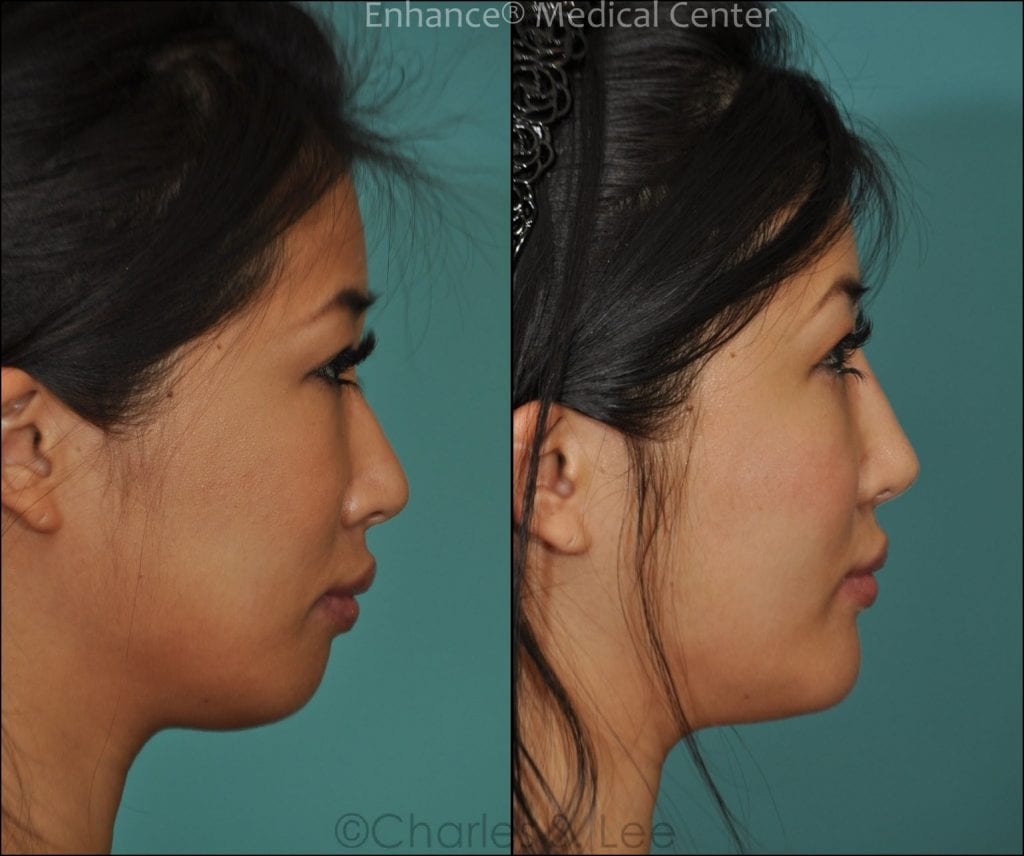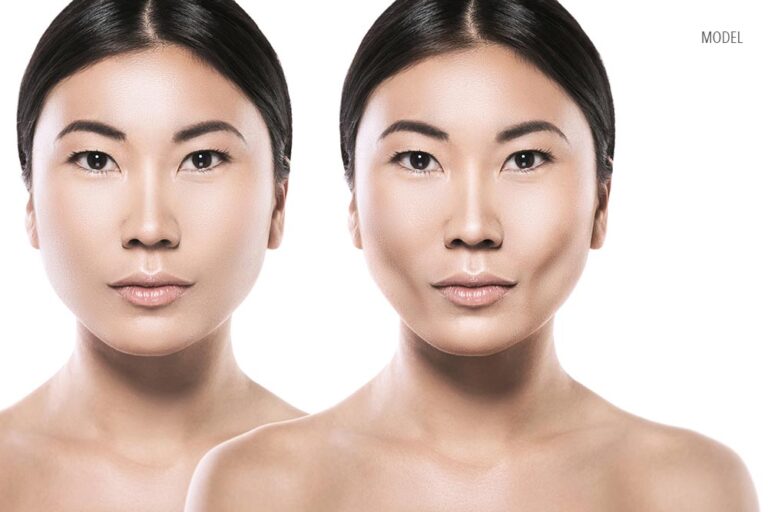Asian rhinoplasty using all natural tissue (without silicone or Gortex foreign implants)
No need for rib grafts (in most cases) or skull bone grafts! Recent advances in Asian nasal surgery have developed that allow all natural tissue to be used consistently to build up the tip and bridge of the Asian nose without resorting to the use of foreign body implants such as gortex or silicone.
Prior to the development of this new technique, an all natural Asian rhinoplasty required obtaining a large piece of cartilage from the rib or a piece of rigid bone from the skull. These were the places with material large enough to build up the bridge.
Needless to say, patients were resistant to having major surgery in order to build up the bridge. For that reason, silicone and gortex implants became the standard materials for nasal bridge augmentation. In the mid-1980’s, thin tissue (temporalis fascia) from just under the scalp, near the ear, was used to build up the bridge (Sheen).
This was useful for very small augmentations, typically in Caucasian patients. For greater augmentation, ear cartilage was rolled into a cigar shape and then wrapped in fascia. However, irregular contour was a frequent problem. In the late 1990’s and early to mid-2000’s, rib cartilage became a popular way to build up the bridge of the nose.
The main problems encountered were the tendency of rib cartilage to warp in one direction or another, as well as patient resistance to having a relatively large operation . In the latter 1990’s, ear cartilage was used to build up the bridge by dicing it into small pieces and placing it along the bridge of the nose. By dicing the cartilage into very fine cubes, there was no longer problems with irregular shape or warpage.
Initially, cartilage was wrapped in a Surgicel ®, a material that may cause the cartilage to resorb (Erol). The issue of cartilage resorption was solved by taking diced cartilage and wrapping it in the thin scalp tissue (temporalis fascia) to lay along the bridge (Daniel). In our clinic, we offer nasal surgery using all natural tissue under IV or general anesthesia directed by a board certified physician anesthesiologist. The advantage is all natural tissue.
Our facility has on-site certification approved by the state of California to ensure patient safety.
